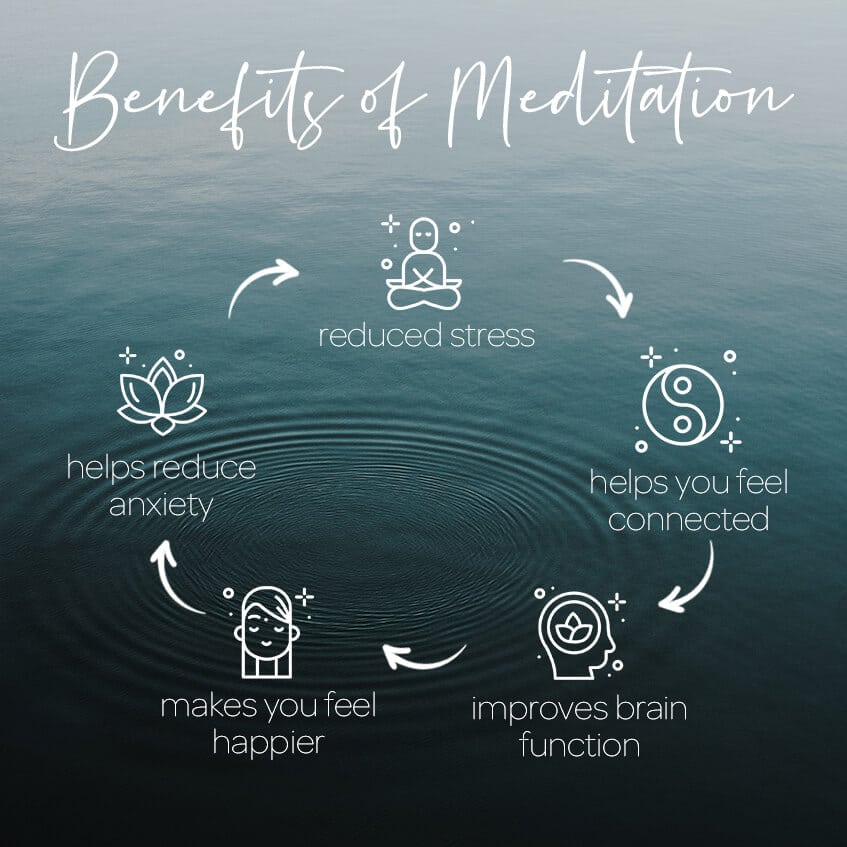I get a lot of strange stares when I say that I’m a lawyer who also teaches other lawyers and professionals how to meditate and practice mindfulness. A rising number of law schools and legal companies are teaching mindfulness and meditation to their students and employees for greater focus/concentration, emotional control, and the many other advantages shown in scientific studies. This age-old method is being resurrected by other experts, particularly in the technological sphere, to enhance leadership and teamwork, and to reduce healthcare expenditures. Google, Salesforce, Aetna, Goldman Sachs Group, Blackrock, and Bank of America are just a few examples of companies that provide mindfulness training.
Although mindfulness and meditation have been around for thousands of years, they have recently gained popularity in the corporate world because we can finally observe the profound effects that they have on the structure and function of the human brain.
1. Mindfulness Reduces Anxiety
Because of crippling anxiety, I began training my mind through meditation and mindfulness. My job as a lawyer leads me to spend a lot of time worrying about the worst-case scenarios. Ninety-three people diagnosed with generalized anxiety disorder (GAD) according to the DSM-IV were randomized to either an 8-week group intervention using mindfulness-based stress reduction (MBSR) or a control group, stress management education (SME), in a study conducted in 2013 at Massachusetts General Hospital. There was a statistically significant correlation between participation in the MBSR program and a reduced incidence of anxiety in the treatment group.
2. Mindfulness Meditation Reduces Implicit Age and Race Bias
Associations and mental short cuts help humans get around in the world, therefore it’s only logical that they would do so. Some quick cuts are required, such as being aware of your personal preference for breakfast foods. However, when it comes to age and racial prejudice, such connections can be harmful. When dealing with criminal cases, for example, it is essential that everyone from police officers to prosecutors to defense attorneys to judges keep their own prejudices in check.
In a study conducted in 2015 by Professor Adam Lueke of Central Michigan University, participants listened to either a mindfulness or a control audio. Mindfulness meditation was found to reduce implicit bias toward older adults and people of other races.
3. Mindfulness-Based Cognitive Therapy (MBCT) May Prevent And Treat Depression
The term “mindfulness-based cognitive therapy” (MBCT) refers to a treatment method that incorporates aspects of CBT and MBSR. As stated by the American Psychological Association, “MBCT is an eight-week, group-based program that incorporates mindfulness exercises including yoga, body awareness, and daily homework, such as eating or doing household chores, with full attention to what one is doing, moment by moment.”
ALSO READ: Top 10 Home Remedies To Treat Dark Circle
“People at risk for depression are dealing with a lot of negative thoughts, feelings, and beliefs about themselves,” explains Willem Kuyken, PhD, a professor at the University of Oxford in the United Kingdom. To put it another way, “MBCT helps them recognize that’s happening, engage with it differently, and respond with equanimity and compassion.” According to research conducted by Professor Kuyken, MBCT is just as effective as maintenance antidepressant medication in preventing the relapse of depression.
4. Increase Body Satisfaction

Dissatisfaction with one’s physical appearance is a common source of distress for women of all ages. Studying the effects of meditation on women, Ellen R. Albertson, Kristin D. Neff, and Karen E. Dill-Shackleford split participants into two groups. Participants in the intervention group were taught self-compassion meditation techniques over the course of three weeks. By comparison to the control group, the women who participated in the intervention “experienced significantly greater reduction in body dissatisfaction, body shame, and contingent self-worth based on appearance, as well as greater gains in self-compassion and body appreciation.” Curiously, these results persisted even after three months had passed.
5. Mindfulness Meditation Improves Cognition
Twenty-four participants were randomly allocated to the intervention group in a study published in 2010 in the journal Consciousness and Cognition. They attended four classes on the practice of mindfulness meditation. Twenty-five participants made up the “control” group, who all listened to audio books. A better mood was observed in both the meditation training and control groups, but only meditation training was associated with a decrease in fatigue and anxiety as well as an increase in mindfulness. Visual-spatial abilities, as well as working memory and executive function, were also dramatically enhanced by even a few days of mindfulness training. The study’s authors write, “Our findings suggest that four days of meditation training can enhance the ability to sustain attention; benefits that have previously been reported with long-term meditators.”
6. Mindfulness Meditation Help The Brain Reduce Distractions
In a world where our attention is always being demanded, from a hundred different directions at once, it is more important than ever to train the mind to focus and concentrate. Similarly to how radio stations utilize specific frequencies to transmit their signals, “brain cells use particular frequencies, or waves, to regulate the flow of information,” according to a Harvard study. When you’re trying to block out irrelevant or distracting sensations and control the flow of sensory information across brain areas, the alpha rhythm is most active in the cells that process touch, sight, and sound in the brain’s outermost layer, called the cortex.
The people who took part in this study participated in a mindfulness training program that lasted for eight weeks. Mindfulness meditators “made faster and significantly more pronounced attention-based adjustments to the alpha rhythm” than the control group towards the end of the eight-week program.
Mindfulness and meditation are becoming increasingly accessible. The internet is rife with resources that can help, such as courses, books, applications, and videos found on YouTube. Developing a regular practice of meditation and mindfulness is, in my opinion, the most challenging aspect of these activities. As with other desirable behaviors, such as exercising and eating healthily-balanced meals, knowing what to do is very different from actually doing it.
Get into the habit of practicing mindfulness and meditation every day if you’re interested in learning more. First, set a realistic goal that you know you can meet (2-10 minutes per day, for instance). After a week of practice, you can decide if you want to extend (or shorten) your meditation sessions. Experience, rather than a research, can best demonstrate whether or not these methods will “work” for you. Try it out and see if it works for you.





